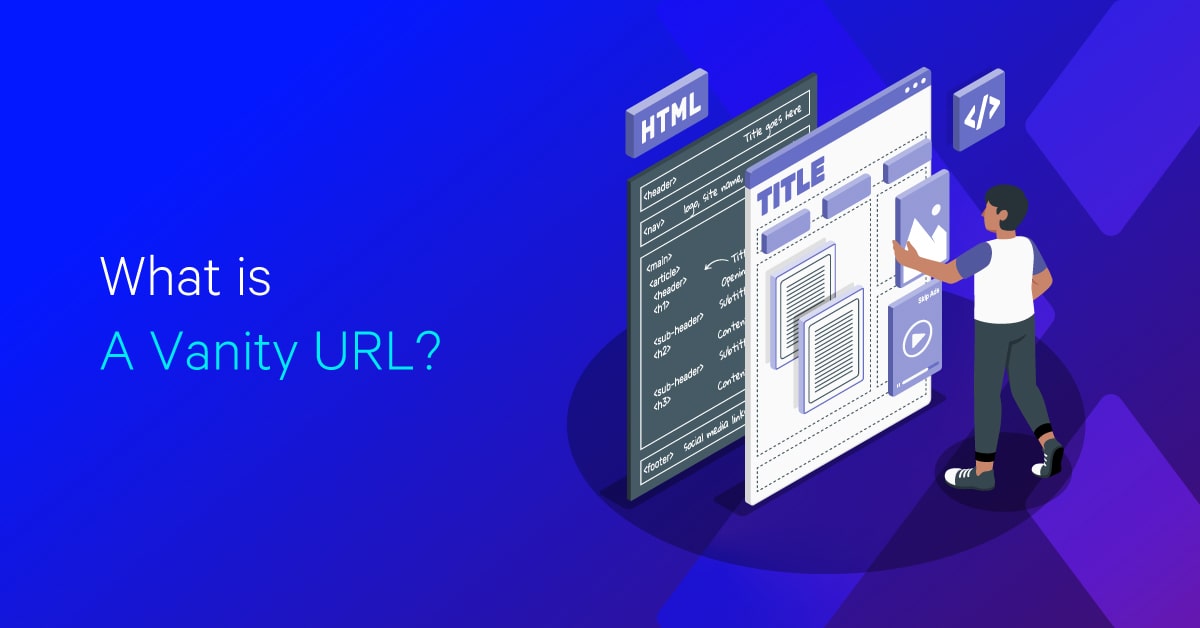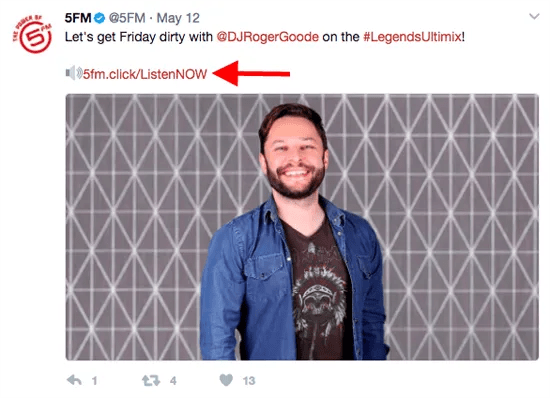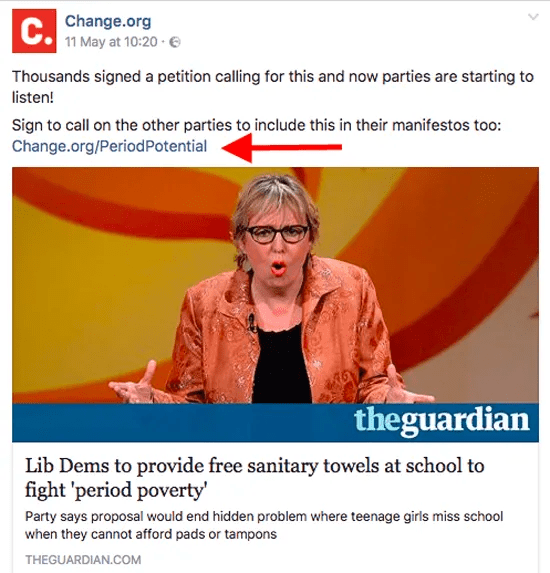What Is a Vanity URL?

Hand off the toughest tasks in SEO, PPC, and content without compromising quality
Explore ServicesWe live in a time where we can quickly access almost any resource, product, or service with a single click. According to studies, we have a shorter attention span than a goldfish, with a concentration span of only eight seconds. As a result, it’s no surprise that customers have little time for anything other than rapid and pleasant user experiences.
This is why vanity URLs are so important for businesses to use in their digital marketing initiatives. They make certain that clients can quickly visit your campaign URLs in a hassle-free manner – all before you lose their interest.
You’ve come to the right spot if you’ve never heard of vanity URLs. We’ll explain all you need to know about them in this article, including what they are, why they’re essential, and how to make them.
What Is a Vanity URL?
A vanity URL is a sort of custom URL that is designed to be not only more memorable and readable than a standard URL, but also simpler for consumers to access and interact with. They are often used by businesses that want their marketing campaign URLs to make a great first impression on customers.So, just what is a vanity URL? Simply said, a vanity URL resembles a basic, easy-to-remember URL, often designed for marketing purposes. In reality, it is an embedded link that, when clicked, leads to a more sophisticated, lengthier URL.
Vanity URLs are not to be confused with vanity domains, which are domains that are named after the owner.
There are many advantages to being the first to claim your vanity URL – and just as many disadvantages if someone else does it first. Many social media platforms like Facebook, LinkedIn, Twitter, and, most recently, Google Plus, allow individuals and companies to personalize their GPlus profile URLs.
Why Is a Vanity URL Important?
Easier to share and use
The major reason why vanity URLs have become such an important tool for marketers and companies in every industry is that they provide a meaningful and practical way to lead users to the particular content they wish to view.
As part of the current vanity URL procedure, you can simply select a Top Level Domain (TLD) and afterwards specify alternative naming patterns while sharing links to certain parts of your site.
Builds trust
What is more visually appealing also fosters more trust. The fact that you are prepared to associate your brand name with the content you are posting assures followers that your link will not take them to spam or phishing sites, but that the stuff you are connecting them to is relevant to them and consistent with your brand.
When compared to generic short links or long unbranded links, this enhanced trust can raise your CTR (Click Through Rate) by up to 34 percent.
Allows for online sharing
Isn’t it incredible? A minor aesthetic adjustment may have a significant influence on your marketing efforts. If you have a strong Google Plus brand presence and an active community, or aim to have one, it’s a good idea to develop a supporting infrastructure around it for increased brand awareness.
It’s easier to remember
Have you ever suggested a website to someone who was too lazy to look it up? Worse, have you ever discovered anything interesting on the internet but can’t seem to find the perfect keyword combination to make it appear in search engines? Potential website visitors are less likely to abandon your webpage if it has an easy-to-remember web address.
Furthermore, it appears to be a lot more appealing to the eye. This is why URL shortening services such as bit.ly and tinyurl are so popular.
Allows for offline sharing
We’re all aware that there are several methods for visitors to reach our website online – and you don’t have to be online to hear about a website. There are several locations on your offline advertising materials where you may include your vanity link to promote greater social interaction online.
While it is true that corporations are spending less and less on conventional media advertisements, you will never know for sure if an opportunity has been missed unless you test your ideas to see how effective they are!
Complete control over link management
You have more control over your custom short URLs if you use your own domain. You can delete them, reroute the destination, or change the description as you see fit.
Improved SEO
When it comes to SEO, putting a keyword in the URL slug of your links will provide you an advantage over rivals. You will also profit from having your name linked with your keyword.
Assist in obtaining more insights and data on your visitors
If you are doing an offline marketing campaign in a newspaper, for example, you will be missing out on vital data about your potential clients if you do not build your vanity URLs and track your connections. It would be like going across a savanna blindfolded. You won’t find out what’s working, where it’s working, or how it’s working.
For example, you could wish to utilize one link in one spot and another in another to observe which one generates the most traffic. With the proper software solution, you can simply track other data such as their demographics, browser, and devices.
Vanity URL FAQ
What is a vanity URL example?
A large number of large and small companies, as well as influencers, have recognized the value of vanity URLs. Here are a few instances of how brands are making use of them:
On Twitter
On Instagram
For Facebook
How do I create a vanity URL?
It’s a surprisingly simple method to create a vanity URL especially with the many url shortener services.
A vanity URL is divided into three components: your customized short domain name, TLD, and URL slug.
Step 1: Select a Domain Name
The first thing you must do is select a domain name.
It is critical that your domain name mirrors the rest of your organization in order to maintain your branding consistent and for consumers to recognize the connection as yours.
Step 2 – Select a TLD
You must select an appropriate TLD (Top Level Domain), such as.link,.click,.lol,.news, or.blog, to name a few.
Step 3 –URL Slug (Keyword)
Once you’ve decided on a branded domain name and TLD, you can begin creating vanity URLs. The domains you register will, of course, be stored to your account so you can begin utilizing them to build vanity URLs.
Are vanity URLs bad for SEO?
There is a widespread misunderstanding that redirecting a link in this manner would harm your SEO strategy. Vanity URLs are simply used to provide a clean, tidy, and branded link that redirects users to a less attractive URL. They are not cataloged by Google in the first place and are not designed to rank organically, thus having a vanity URL is not a problem.
The primary distinction between these two connections is that your vanity URL is readily shared since it is pronounceable and memorable. This is how vanity URLs aid in the search engine optimization (SEO) of your website. You don’t have to choose between a solid site structure and an easy-to-share link; you can have both.
Make Use of Vanity URLs for More Conversions
Hopefully, this article has given you a better understanding of vanity URLs.
A vanity URL can increase your chances of success on any platform where your brand is present. You may create trust, improve your user experience, and give transparency all in one method by following the best practices in this article. Because it feels genuine to the visitor, this procedure will produce more clicks over time. When you increase the number of clicks, you increase the number of conversion opportunities.
With Loganix, you can begin building your links while also adding various added elements to your links to assist you growth hack your client acquisition efforts.
Get quality, niche-specific links without giving up control.
Hand off the toughest tasks in SEO, PPC, and content without compromising quality
Explore ServicesWritten by Jake Sheridan on August 18, 2021
Founder of Sheets for Marketers, I nerd out on automating parts of my work using Google Sheets. At Loganix I build products, and content marketing. There’s nothing like a well deserved drink after a busy day spreadsheeting.





